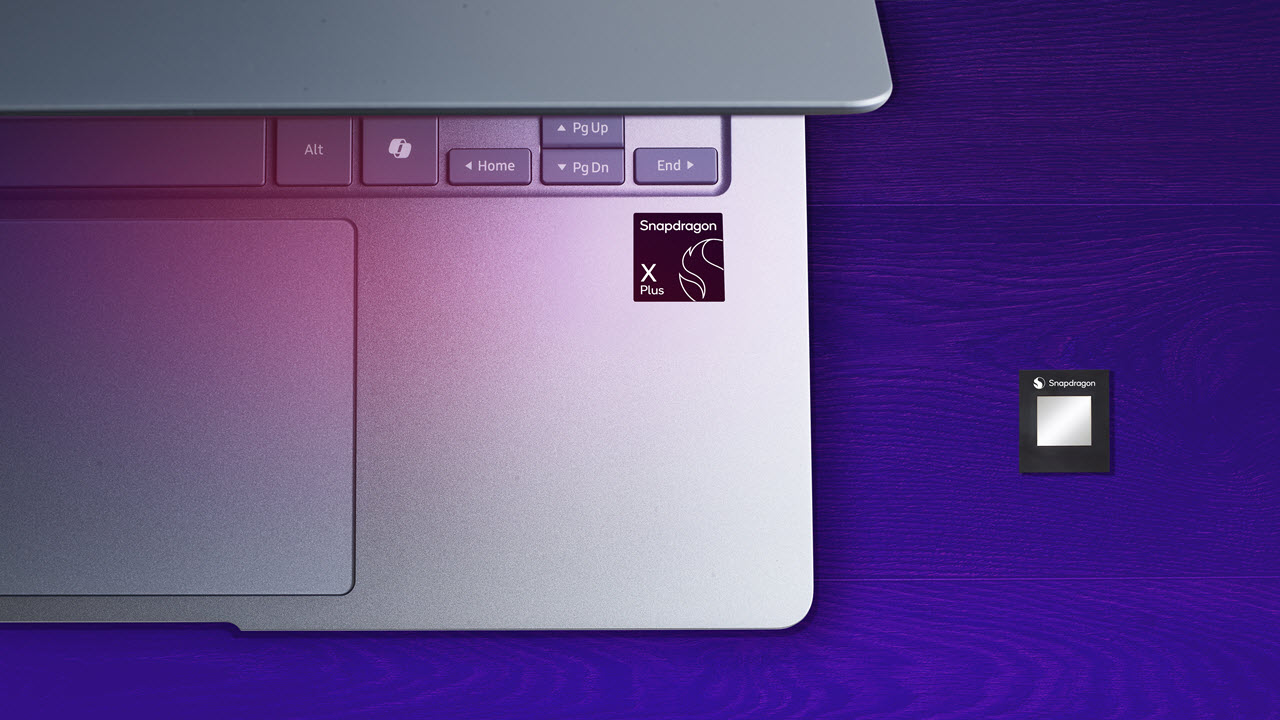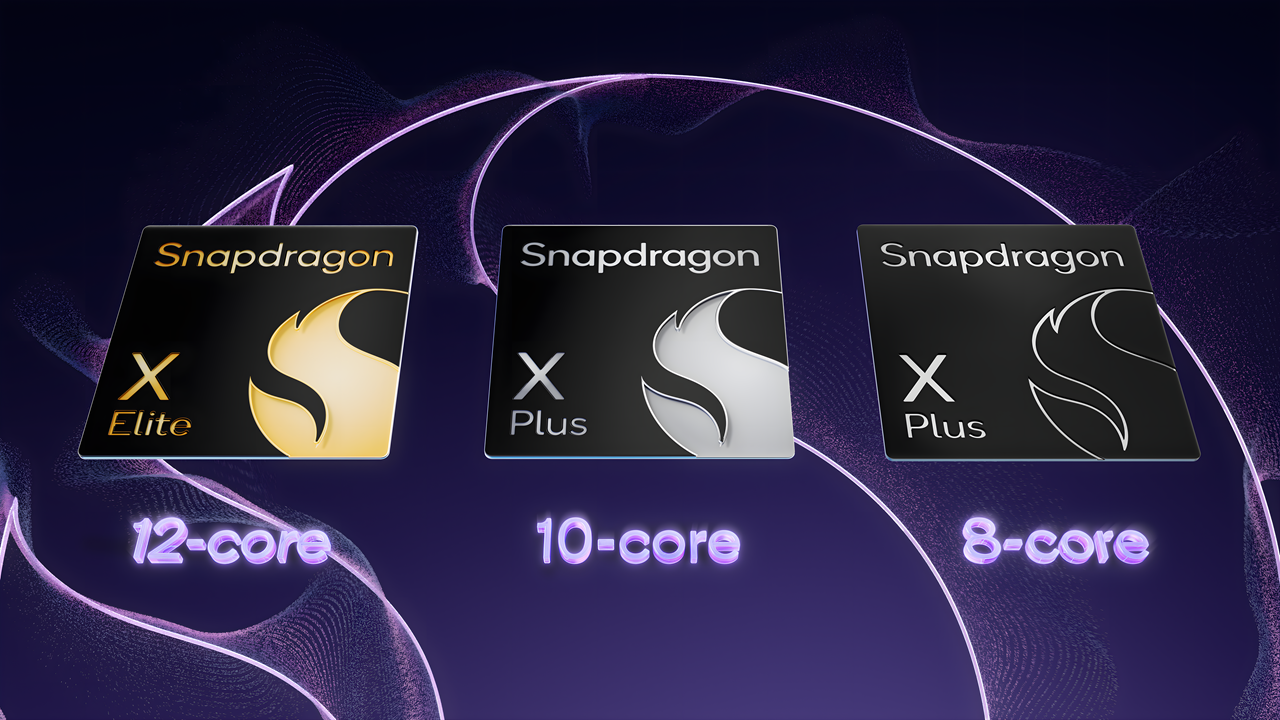
Qualcomm's Snapdragon X Elite and X Plus chips launched in laptops earlier this summer, showing up primarily in high-end machines with premium price tags. At IFA in Berlin, the company is introducing a lower-end version of the Snapdragon X Plus with 8 CPU cores instead of the usual 10 cores on that chip. The company suggests the change will lower prices, with laptops featuring the 8-core version starting at $799.
Crucially for Qualcomm's marketing of the chips, it maintains the same 45 NPU tops as the 10-core X Plus and the higher-end X Elite models, allowing the company to claim similar AI performance.
There are two new chips in the 8-core range: the X1P-42-100 and XP-46-100. Both have 8-cores, but they have several differences. The X1P-42-100 goes up to 3.4 GHz with single-core boost, 3.2 GHz using multi-core boost, and the GPU goes up to 1.7 TFLOPS. The XP-46-100 goes up to 4.0 GHz with single-core boost and 3.4 GHz multi-core with a 2.1-TFLOPS GPU. (Unlike the initial 10-core X1P-64-100, these do have single-core boost).
That being said, there are a number of other differences between the 8-core and 10-core versions of the Snapdragon X Plus beyond the number of CPU cores. The 8-core versions have less cache (30MB versus 42MB on the 10-core), and the weakest chip has slower single and multi-core performance. The GPU is also slower, going up to 2.1 TFLOPS on the stronger 8-core GPU compared to 3.8 TFLOPs on the 10-core. That will be particularly interesting to see in action, because GPUs are popular for AI applications, some of which don't use the NPU.
The other big change is to the image signal processor. The newer chips support up to a 36MP single camera, down from 64MP on the 10-core X Plus (which could also support dual 36MP cameras).

Surprisingly, Qualcomm is still calling these chips X Plus. The company is using a different badge from the 10-core version, clearly realizing it needs to differentiate in the marketplace. But every X Elite model has 12 cores, so until now, it seemed that the number of CPU cores is the big differentiator between levels of the chip. (And frankly, the usage of "Plus" suggests something below it.). It's unclear if a black Snapdragon flame instead of a silver one will really help people understand what they're buying.
Laptops with the 8-core X Plus are starting to launch today, with options from HP, Acer, Asus, Dell, Lenovo, and Samsung being announced around IFA, according to Qualcomm's slides.
These will be Copilot+ PCs, with exclusive features like Cocreate and live translation — at least until AMD's Ryzen AI 300 chips and Intel's Lunar Lake processors finally get the nod.

Qualcomm claims in its slides that it delivers 79% faster peak single-threaded CPU performance than the Intel Core Ultra 5 125U at 216% less power. Meteor Lake was just replaced yesterday, and the Lunar Lake successors will officially launch this month. Time for some new testing, it seems! The company also claims up to 40% better single-threaded performance than the Ryzen 5 8640U at 150% less power.
In multi-threaded performance, Qualcomm claims the same X1P-46-100 offers 35% faster multi-threaded performance in Geekbench 6.2 than the Ryzen 5 with 116% less power.
The company also claimed faster single-core performance than the Core Ultra 7 155U (61% faster at 179% less power) and the Ryzen 7 8840U (22% faster with 121% less power). In multi-core, that was 41% faster performance at 124% less power for the Intel chip and 7% faster performance at 39% less power against AMD.
Qualcomm also promises up to twice as much battery life against the Core Ultra 7 155U, though that's specifically on Teams Video Calls (and using the weaker X1P-42-100). The smallest difference, in Office 365 apps, was a claimed 36%. This is another area where re-testing will be necessary when Intel's Lunar Lake chips are released this month.
We've embedded Qualcomm's slides above.
A new 10-Core Snapdragon X Plus
Qualcomm is making much less noise about a new 10-core Snapdragon X Plus listing in new comparison tables. The X1P-66-100 has 3.4 GHz like the existing 10-core chip, but also adds single-core boost up to 4.0 GHz. It otherwise has the same cache and the same graphics capabilities. A Qualcomm representative told Tom's Hardware that this new chip would start showing up in the first half of 2025, which sounds to me like we'll see it more at CES.
This configuration is listed in a product briefing describing the new 8-core chips (and is in the table above), but isn't mentioned in Qualcomm's press releases or other documents regarding the new chip. It sounds like Qualcomm is just teasing it, for now.







